Forum Replies Created
-
AuthorPosts
-
Here in SE Kansas we have always had an abundant supply of coyotes. Being raised around the farms (grandparents and aunts & uncles) I know first hand what a coyote pack is capable of doing to livestock and wildlife. And no, they don’t just kill what they can eat.
Since the fur prices have dropped (10-15 years ago) the coyote population has exploded around here and they show less wariness toward humans. Seeing road killed coyotes used to be a rare event here but with the high population it is now common.
In most circumstances, if I’m not going to eat it I won’t kill it. With coyotes however, it is a different story. I will shot at every coyote I see if I can get a clear shot at it. No guilt feelings at all.
I made a statement on a thread once (I believe it was the LW) that the coyotes were getting brazen and getting too close to my house and I saw them as a threat to my family and pets. I was asked, rather snidely, what I considered too close. On several occasions I have left for work and found coyote crap in my driveway. Too close? Any closer and they will be on my porch.
I like to hear the coyotes during their nightly sing-alongs (at least five packs within earshot) but they will get no pardon from me.
Dennis
in reply to: Starting Some New Ones #39701I’m keeping this one Steve. I will post some more pictures of it after the final finish. I have to be in Topeka all week so it will be a while before I get it done.
This bow is a little ‘different’ in the respect of shooting to the right. I usually shoot left with a bow but I’m still not done adjusting the brace height. Hopefully that and some string silencers will move the impact to the left. If you look close in the last video there are the remains of another plastic bottle hanging there. I do occasionally hit them.:D
I have another clear glass ‘issue’ with this one too. There are milky spots showing up in the belly glass on the upper third of the top limb. I will try to get some pictures of it.
Dennis
in reply to: Starting Some New Ones #38911It was really windy yesterday so I postponed my test firing until this afternoon. Sunny and 54* and still a light wind. I am still playing with the brace height and will put on a set of string silencers from Hairy Beaver. It is shooting good and has no stack or kick to it.
Now I need to put on a few more coats of finish. I am using Minwax Polycrylic semi-gloss and I’ve had good luck with it on my bows.
Dennis
in reply to: Starting Some New Ones #36531Between work and the recent storms I haven’t had a lot of time to work on the bow. I made some time and have it to the point where I am spraying finish.
I got the tips done and started working on the riser. I sanded in some finger grooves and it is a very comfortable fit in my hand.
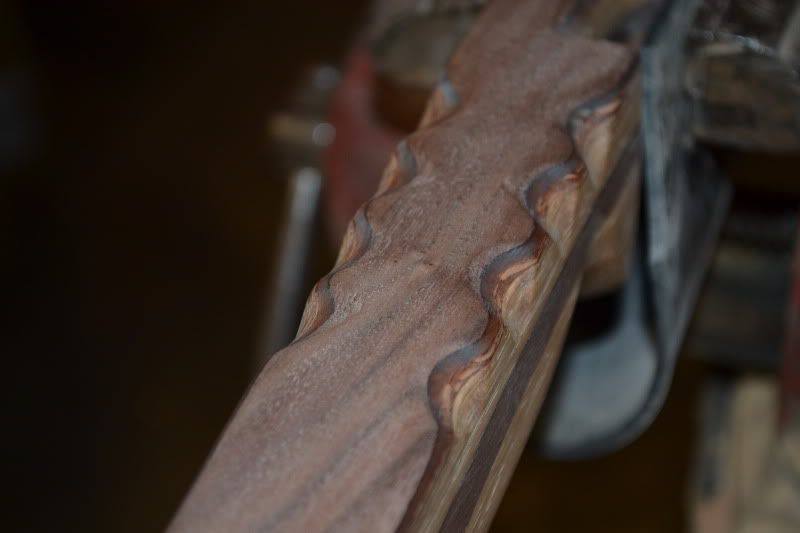
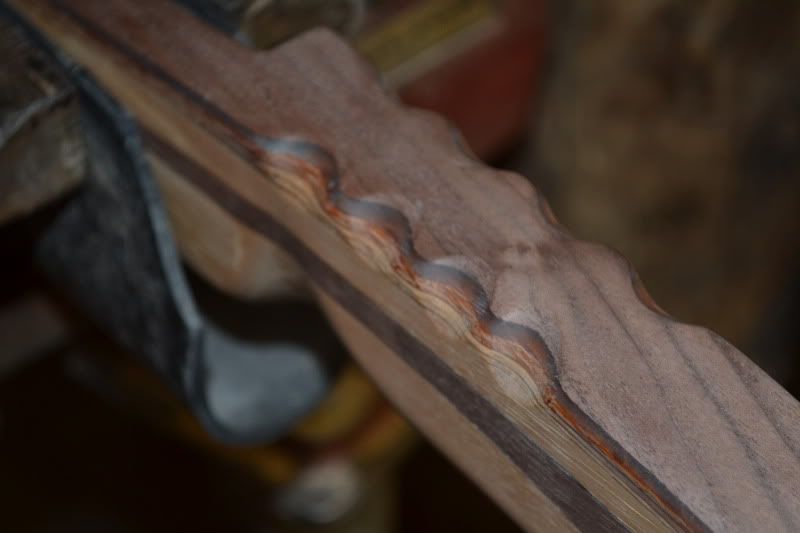
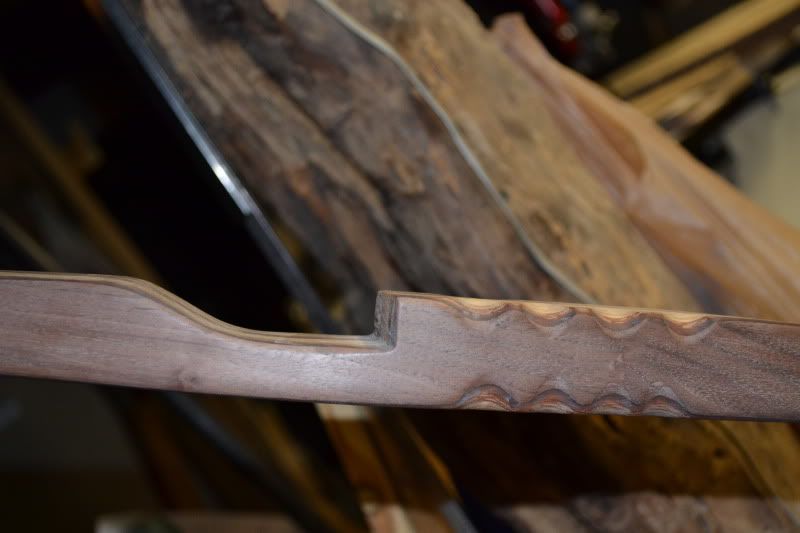
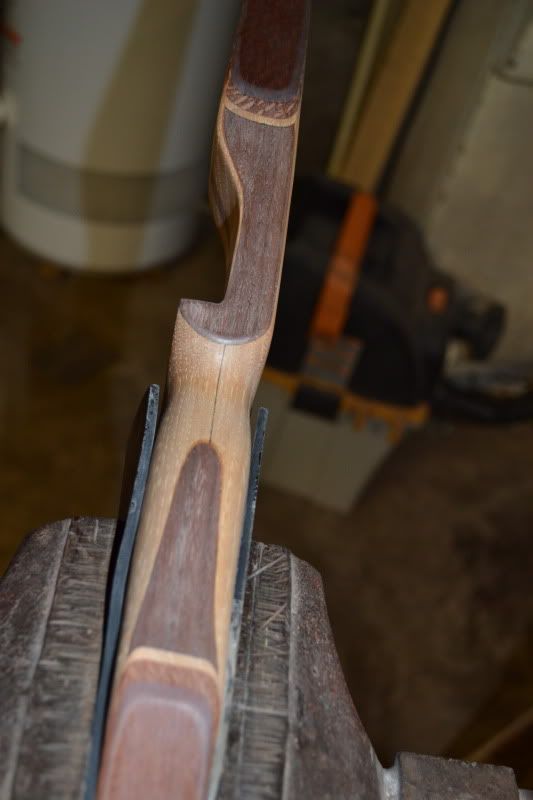
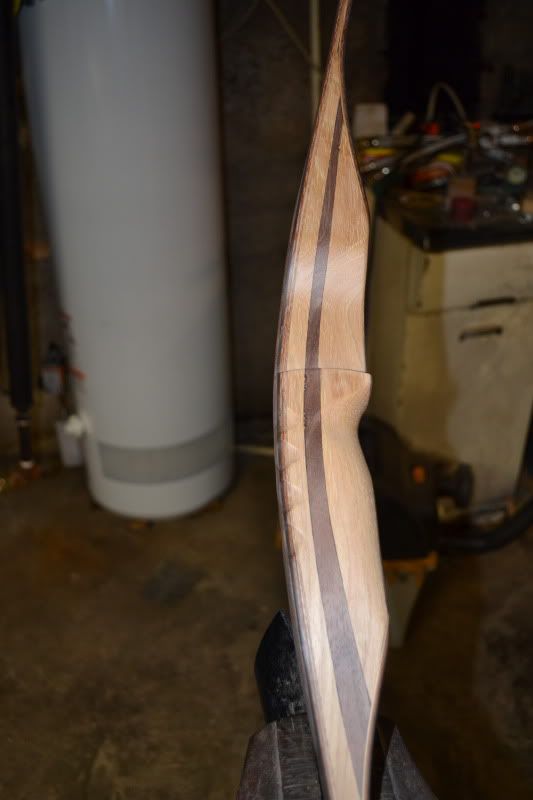
I sanded everything down starting with 120 grit and finished with 320 because I had run out of 400 grit paper. I then buffed everything with 4/0 steel wool. After wiping the bow down with a rag dampened with alcohol I hung it up and the first coat of Polyurethane is drying now. Hopefully I will get some time tomorrow afternoon to test fire it.
Specs:
64″ N-N
53#@28″
Hickory core
Leopardwood laminations
.050 glass
Riser–Hickory W/Black Walnut accent
Black Walnut overlay front and back of riser.
Tip overlays–Mesquite over HickoryDennis
in reply to: Oklahoma Selfbow Jamboree March 17-20 #35350OJAM is held on the Rutter farm six miles East of Stillwater on 51 hwy to Mehan Road (also called N3400 Rd)and six miles South to 80th street. From that intersection go West 1/4 mile to the gate.
Perkins is South of Stillwater on 33 hwy. From Perkins go five miles East on 33 hwy to Mehan and 3 1/2 miles North to 80th.
Hope to see everyone there.
Dennis
in reply to: OJAM VI Video #35342Thanks for the ompliments everyone. In two weeks, we’re doing it all again———OJAM VII————.
Dennis
in reply to: A different kind of repellent #28377I haven’t heard of it either. For ticks and chiggers I use Permanone on my clothes and I haven’t found anything more effective than that. For skeeters I use a Thermacell.
Dennis
in reply to: may I come in? #28375Howdy Homer. Feel free to jump in and add your two cents worth in the forums.
Dennis
in reply to: Starting Some New Ones #27480I managed to get in a few work sessions the last couple of days so I will update the progress.
I started dressing down the riser overlay and blending it in and then did the laminations on the belly.
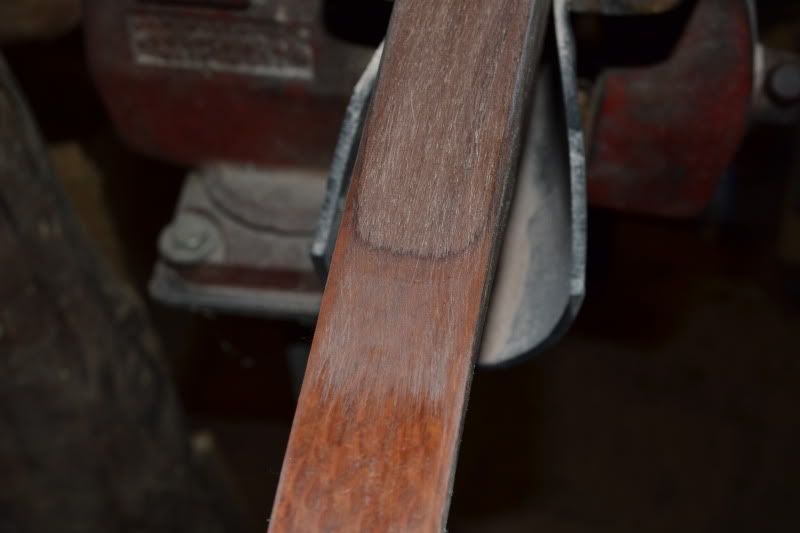
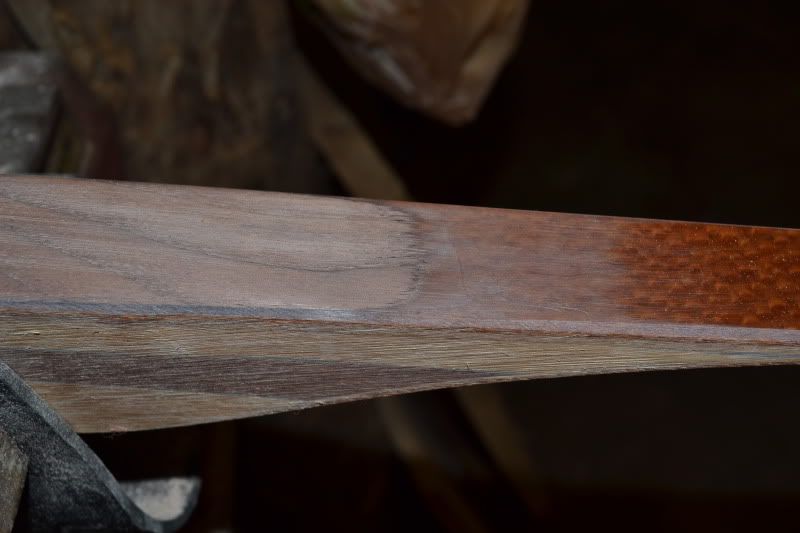
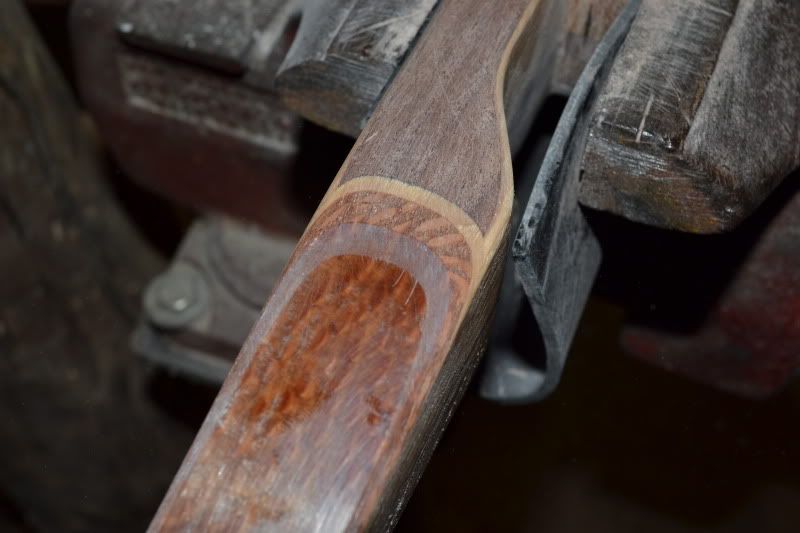
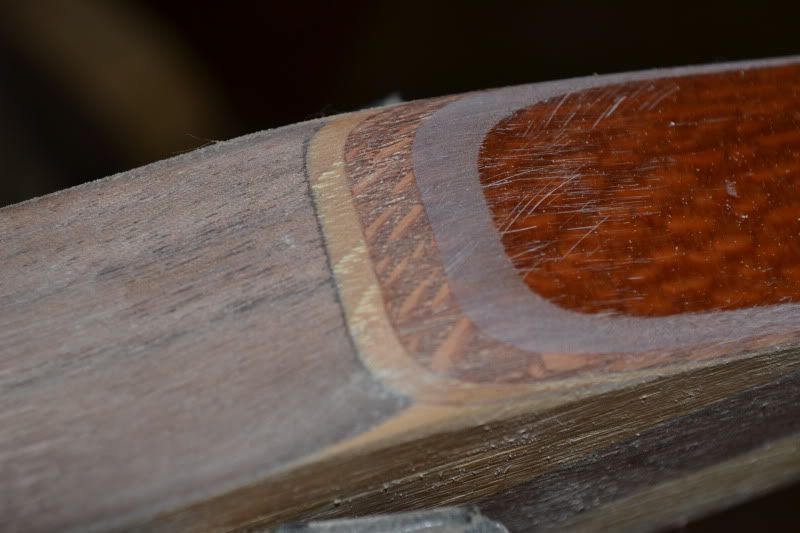
Now I have started the fun part:shock: working on the tips.
I first mark out the general shape of them.
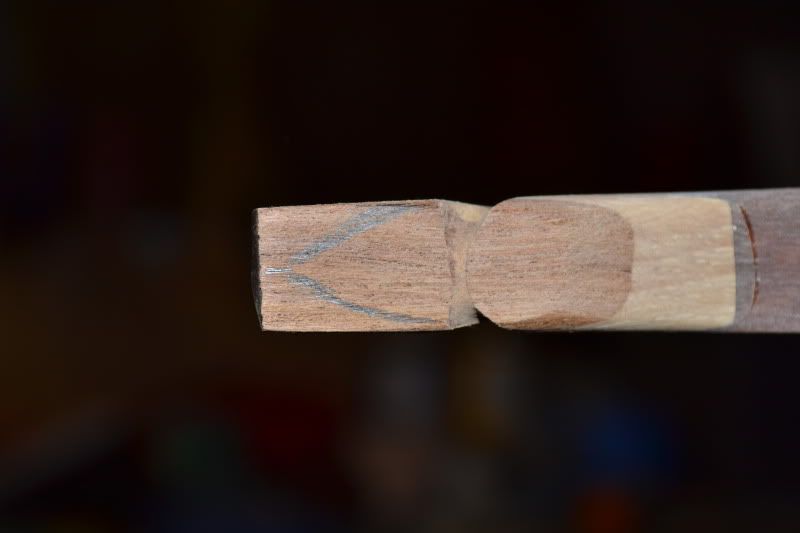
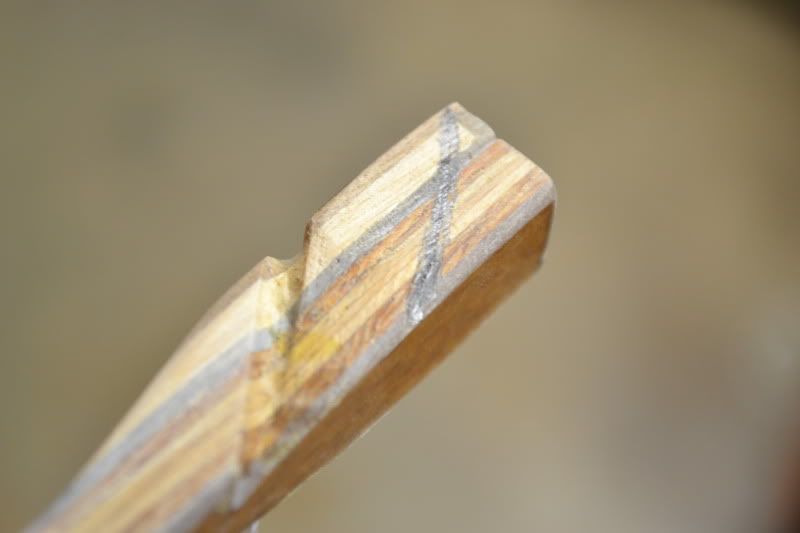
Then I do a little sanding with a small (1″) drum sander in the drill press to get it close to the lines.
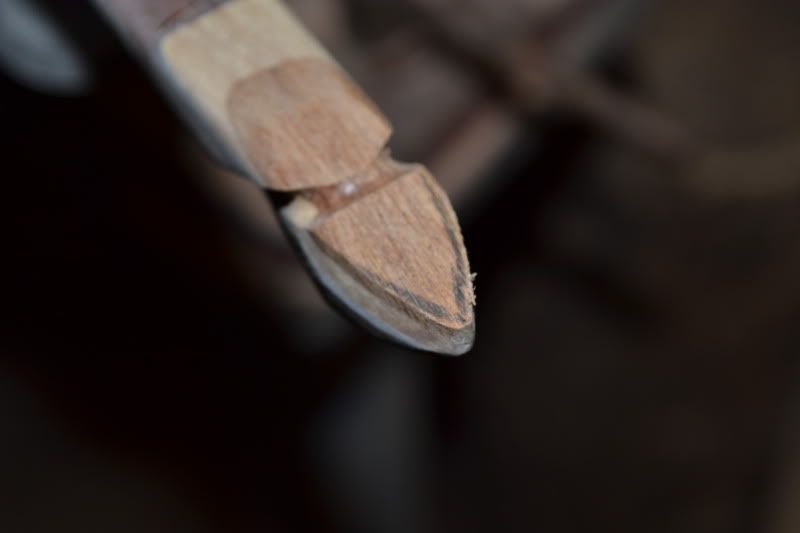
And then use a small rasp and sandpaper to work it on down.
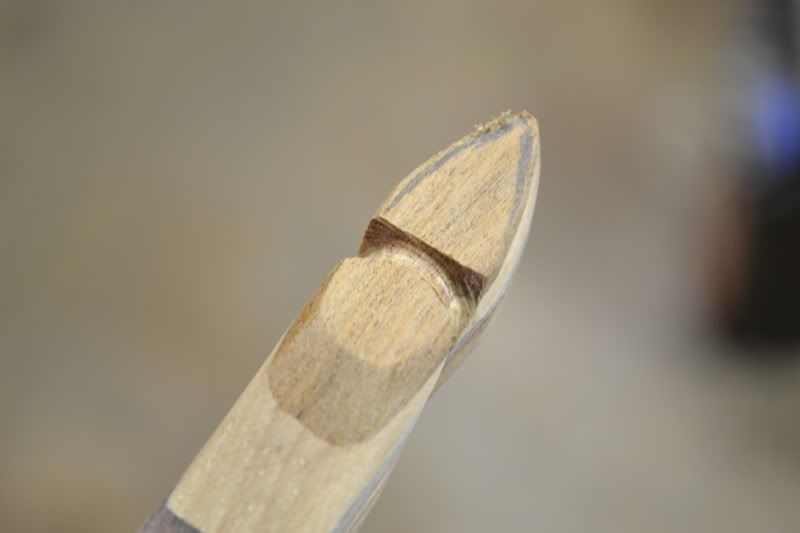
I work on the string groove to finish it out and sand everything down with 120 grit paper. Here is the final fit with the string loop in place. I will take time to even everything out during the final sanding.
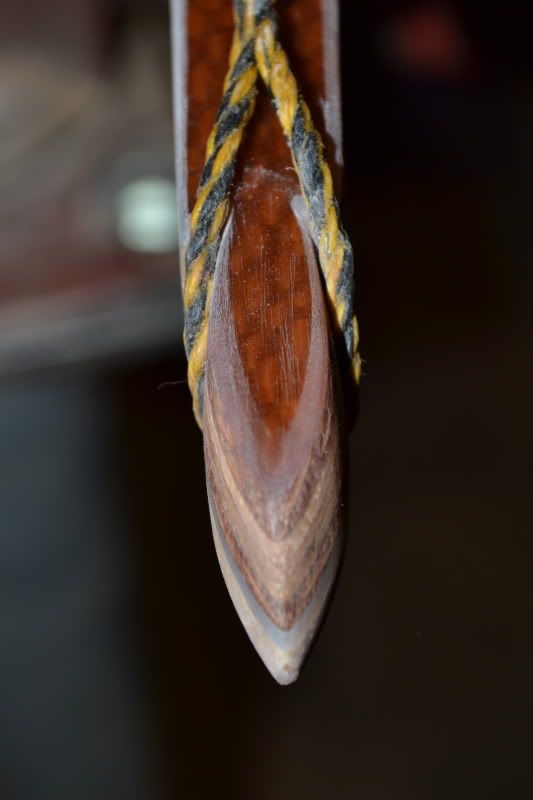
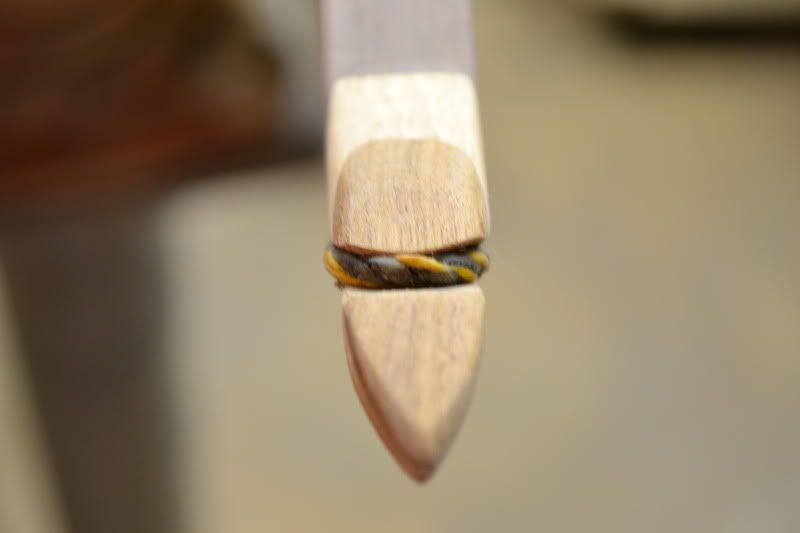
That Mesquite over Hickory is going to look real sharp with the finish on it.Now comes the really fun part. Making the other tip match this one.:shock::shock:
Initial test has the weight right around 55#. After the final finish it should set in around 50#
Dennis
in reply to: Tips fpr a Beginning Bowyer #26783Sorry. I can’t help on that one.
in reply to: Tips fpr a Beginning Bowyer #26140If you are close to Oklahoma plan on attending OJAM VII. This is where you will find lots of answers to your questions and get a lot of hands on experience.
Dennis
Here is a video I made of the fifth annual gathering. It will give you an idea of the event.
in reply to: Sealing Some Surewood shafts #22576Glad to help guys.
I had a lot of the same questions when I got started with this stuff long ago, before the thought of home computers existed. My way of doing things is just one of many and I hope to give someone a few tips and pass along information if I can.
I’ve been trying to get everything ready for OJAM next month. We had a work day there getting the area ready or the campers and having a club meeting to see what else is needed. I just got home and am more behind than I was before.:lol:
Dennis
in reply to: Recurve – new or used? #22569Excellent advice Killdeer. Nothing more needs added to it. Glad to see a post from you.
Dennis
in reply to: Sealing Some Surewood shafts #20555Fletchtite will not stick to Minwax Polycrylic. You will have to use Duco. The first set I made using Polycrylic I used Fletchtite and had three feathers floating around in front of me on the very first shot.
If you decide to use polycrylic wax the shafts with some furniture paste wax before you shoot foam targets. The poly will really stick and make them hard to pull if you don’t.
Another note to watch for. If you use water based analine dyes on your shafts the poly will make the color run. I made some crimson shafts and dipped them a few days later and had a tube full of pink sealer.:oops: It is best to wipe on the poly in this instance.
Dennis
in reply to: Starting Some New Ones #19655OK, now my arms itch like crazy. I sanded the nock and riser overlays off flush and started cutting nock grooves. This is not THE method of doing this but it is the way I do it.
I measure down 3/4″ from the end of the limb and mark across the nock overlay. From this mark I measure down another 3/4″ and make a mark on the belly. Next I mark a line from back to belly on the side of the limb. This is where I cut the string groove. Is that clear as mud? Maybe the pictures will clear this up.
I start the string groove by making a shallow cut on the line with a hacksaw.
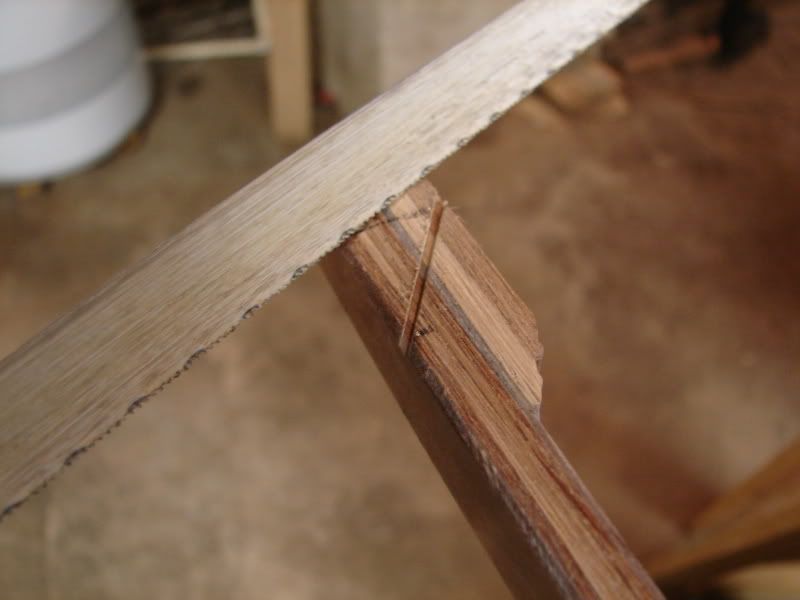
I then deepen this cut with a rod saw.
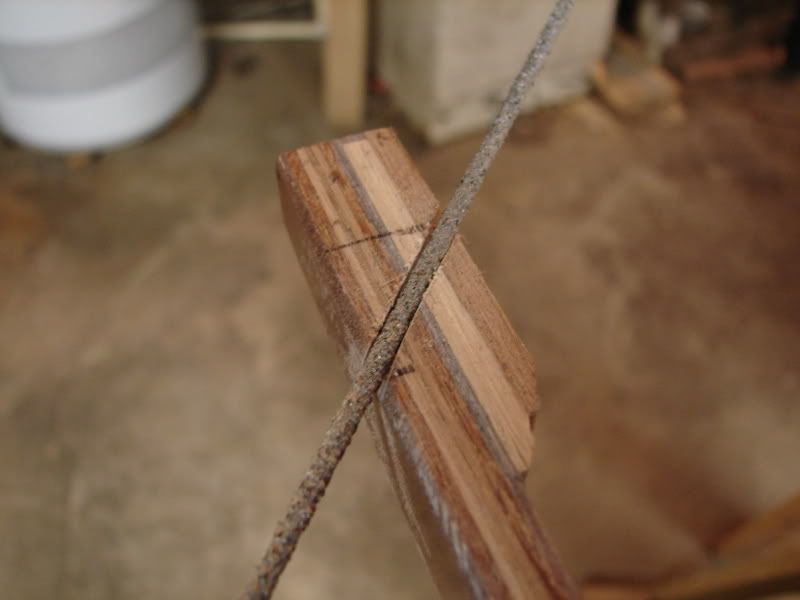
From there I get my 5″ rat tail file and deepen the groove until a string loop sits down in the groove flush with the bow limb.
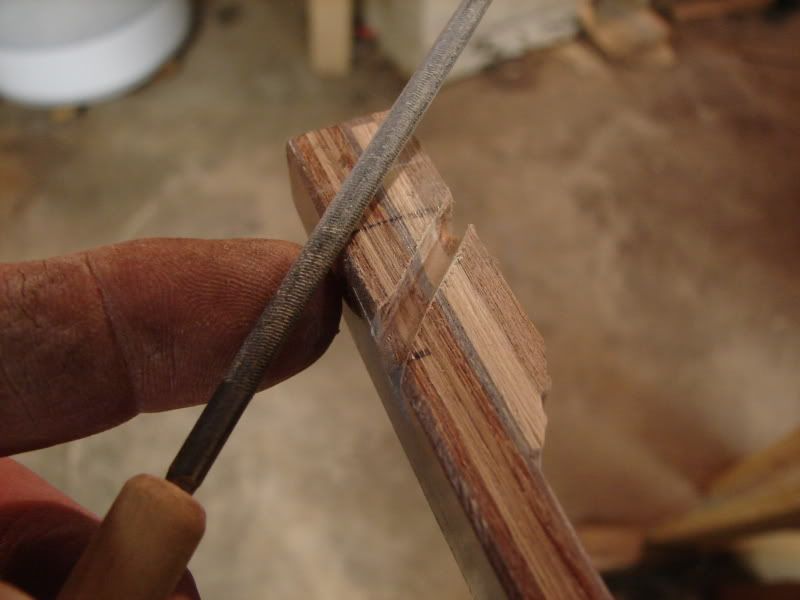
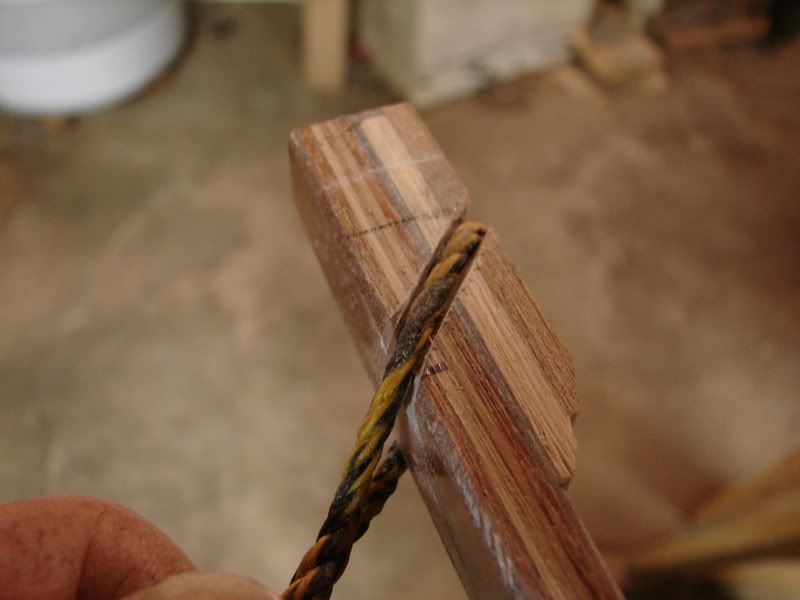
Now I take a 4-in-1 rasp and bevel the back side of the string groove. This allows the string to move when the bow is drawn and won’t chafe the string.
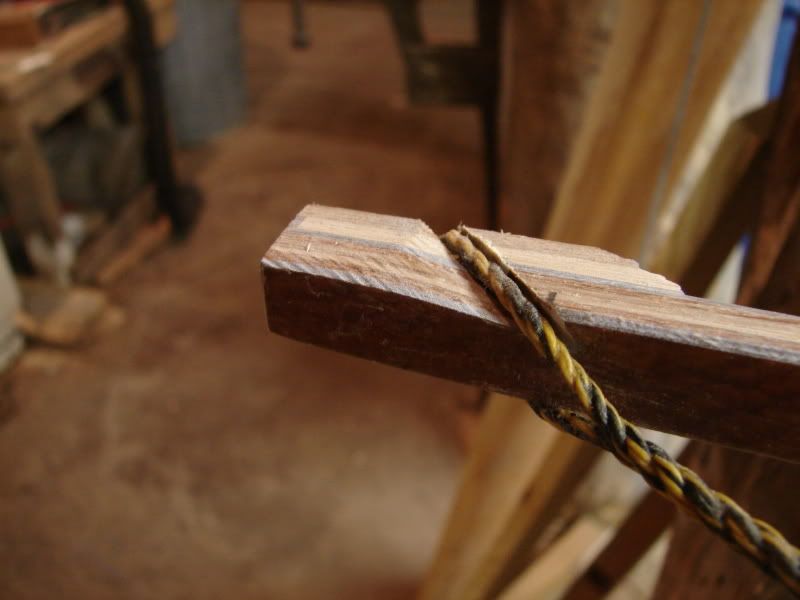
Belly side view of string in grooves showing the bevel.
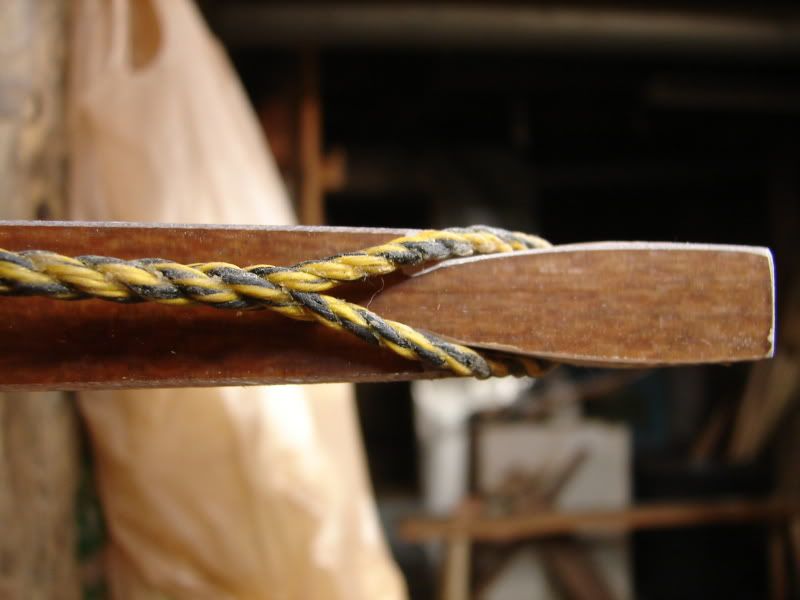
That is as far as I will go on the tips for now. This will let me get a string on the bow and start the tillering process. Initial tillering looked real good so I shouldn’t need to do much after I get a string made.
More to come…………….
Dennis
-
AuthorPosts

